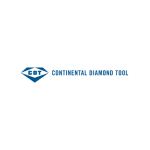In modern manufacturing and metalworking industries, precision and efficiency are critical. One tool that has revolutionized grinding and finishing processes is the electroplated grinding wheel. Known for its durability, performance, and ability to achieve high precision, these grinding wheels have become indispensable in a variety of industrial applications.
What Are Electroplated Grinding Wheels?
Electroplated grinding wheels are specialized abrasives where a layer of diamond or cubic boron nitride (CBN) particles is electroplated onto a metal substrate. Unlike traditional bonded wheels, which rely on resin, vitrified, or metal bonds to hold abrasives together, electroplated wheels have a single layer of abrasive particles that is extremely hard and long-lasting. This construction allows them to maintain sharpness over extended periods and deliver consistent performance.
Key Advantages
1. Longevity
Electroplated grinding wheels are designed to last much longer than conventional grinding wheels. The electroplating process firmly attaches the abrasive particles to the wheel’s metal core, minimizing wear and reducing the need for frequent replacements. This longevity translates into cost savings and less downtime in industrial operations.
2. High Performance
These wheels excel in cutting and grinding tough materials like hardened steel, ceramics, carbide, and glass. Their single-layer abrasive design ensures aggressive material removal without compromising control or surface finish. The consistent sharpness of the wheel also allows for faster grinding speeds, improving overall efficiency.
3. Precision
Electroplated grinding wheels are ideal for applications that demand high accuracy. They can maintain tight tolerances and produce smooth finishes, making them suitable for precision tooling, dies, molds, and aerospace components. The uniform distribution of abrasive particles ensures even wear and consistent results throughout the wheel’s lifespan.
4. Reduced Heat and Improved Surface Quality
Because these wheels remove material efficiently, less heat is generated during grinding. Reduced heat prevents warping, cracking, or other damage to sensitive workpieces. Additionally, electroplated wheels can produce smoother surfaces, reducing the need for secondary finishing processes.
Applications
Electroplated grinding wheels are widely used across industries, including:
- Aerospace and automotive manufacturing: Precision grinding of hard alloys and engine components.
- Tool and die making: Sharpening cutting tools, molds, and punches.
- Ceramics and glass processing: Shaping and finishing brittle materials without chipping.
- Medical device manufacturing: Grinding surgical instruments and implants to exact tolerances.
Tips for Using Electroplated Grinding Wheels
- Correct Speed and Feed: Always follow the manufacturer’s recommended RPM to avoid damaging the wheel.
- Proper Cooling: Use coolant or lubrication to maintain temperature and extend wheel life.
- Regular Inspection: Check the wheel for wear or damage before each use to ensure precision grinding.
- Appropriate Material Selection: Choose diamond electroplated wheels for extremely hard materials and CBN for ferrous metals.
Conclusion
Electroplated grinding wheels represent a significant advancement in grinding technology, offering unmatched longevity, performance, and precision. By choosing the right electroplated wheel for your application and maintaining proper usage practices, industries can achieve faster production times, superior surface quality, and reduced operational costs.
For businesses looking to enhance their metalworking or manufacturing processes, investing in high-quality electroplated grinding wheels is a smart choice that pays dividends in efficiency and precision.





.png)
Comments